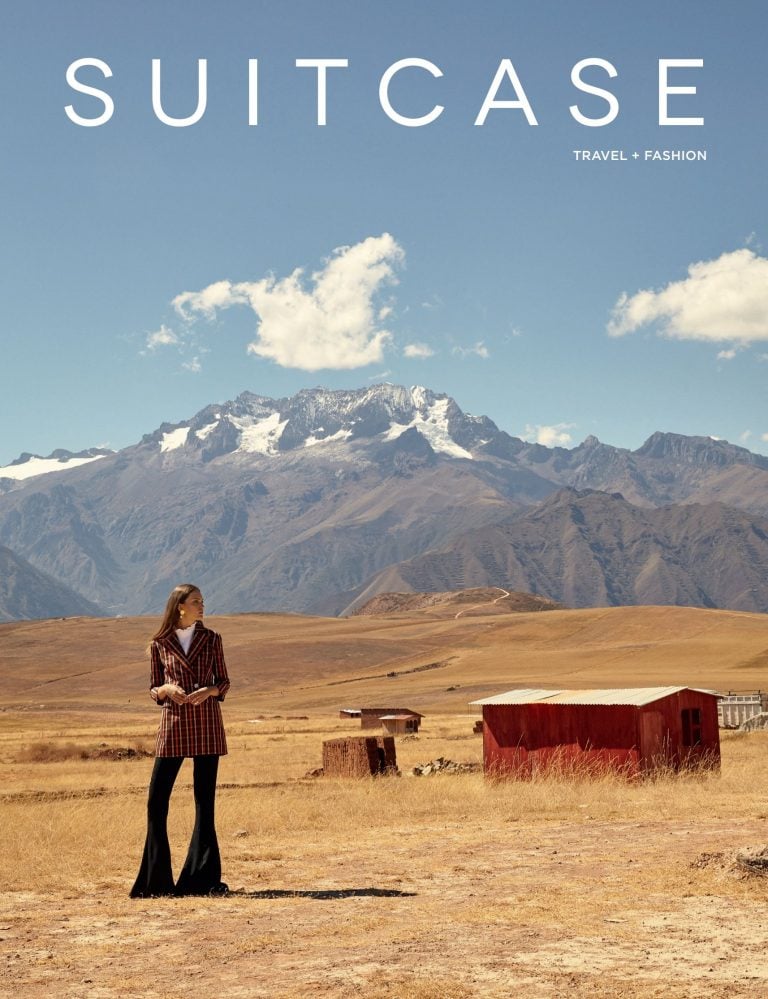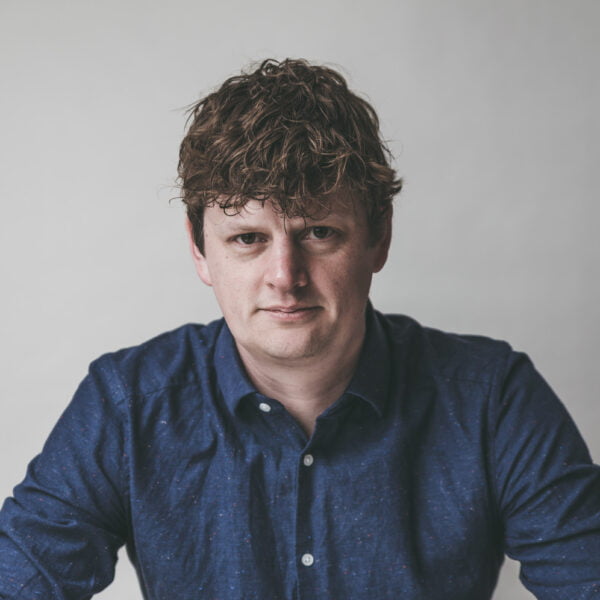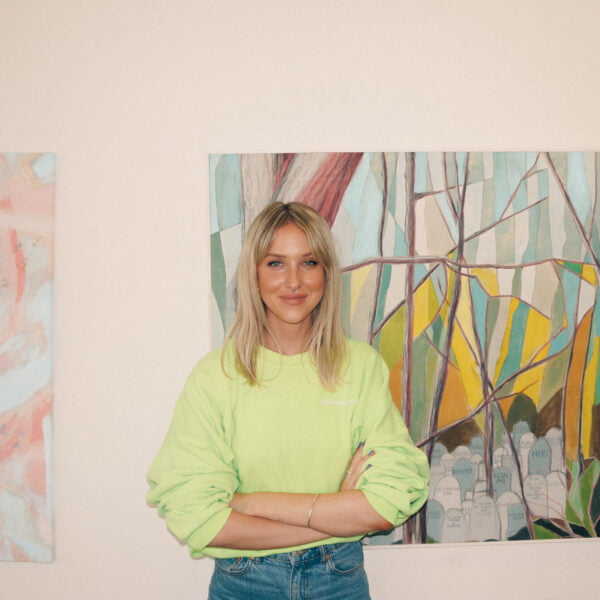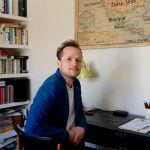
Natasha Collie
Senior Brand Marketing Manager at Penguin Random House UK
At the start of the year, Ladybird Books approached Sonder & Tell with a dream brief. In 2021, a year that’s been particularly challenging for...
In conversation with
Travel Journalist

Imagine travelling the world with your partner and getting paid to write about it. Well, Genevieve Allison has made that dream a reality. After spending years working nine-to-five at MoMa in New York, Gen recently made the jump to go full-time freelance alongside her photographer-boyfriend Elliot Ross. Now based out of Colorado, the pair regularly hit the road and collaborate on travel stories across the US, as well as reaching destinations as far flung as Namibia and New Zealand (where Gen is originally from). How do they make it all work? “Our process is highly collaborative,” says Gen, “we’re both each other’s biggest editor and critic… He shoots what’s interesting to him, and I write what is interesting to me, and then we come together to put together the story”. And while Gen used to spend “an unhealthy amount of time enduring other people’s social media,” now we have to stop ourselves from losing the plot over hers.
Like pretty much every kid that was exposed to the magazine, I was totally infatuated with National Geographic. We had a small library of almost three decade’s worth of volumes in our garage. It took me almost my entire childhood to get through them all. I’d scan their spines to see which places each issue focused on and then take out a stack at a time. I grew up in a place that rained a lot so I spent a lot of wet afternoons leafing through piles of magazines and encyclopaedias dreaming about the wider world. As a consequence, I keep finding myself seeking out flat, bone dry places (this year alone we’ve been to the Chihuahua, Sonoran, Mojave, Coloradan Plateau, Namib and Kalahari deserts). I’m also a native New Zealander, which is to say that I was born with “Island Syndrome.” At least, that’s how kiwis commonly justify their restless desire to leave their peaceful, beautiful and well-functioning country at the first possible instance.

When I met Elliot, my partner (a photographer), I was working a nine-to-five job in Manhattan while he was relentlessly travelling the world and getting paid to do it. Until then I think I’d been moderately happy with my entry-level office life, even though I did suffer from mild depression every Sunday and cried often and publicly. It wasn’t that I was unsatisfied with my job, it was more that I felt cramped by the lifestyle and felt increasingly passive and incurious: I sat in a windowless cubicle for 40-plus hours a week; at minimum, I spent fifteen hours a week in the subway; I took vitamin D pills; and I spent an unhealthy amount of time enduring other people’s social media. Meanwhile, I was spending all of my disposable income on travel and testing the outer boundaries of my boss’s patience with the time I was taking off. Elliot and I soon started collaborating on story ideas and found that we enjoyed working while travelling more than just travelling for travelling’s sake. Eventually, people started publishing our projects and I took the leap into freelance writing.
“It wasn’t that I was unsatisfied with my job, it was more that I felt cramped by the lifestyle and felt increasingly passive and incurious”
Our process is highly collaborative–we’re both each other’s biggest editor and critic. At the outset, we’ll talk about our ideas and intentions for a project and develop these together as we work on research and production. I don’t give him shot lists but I do tell him what images would be helpful in illustrating subjects that I plan on talking about. He shoots what’s interesting to him, and I write what is interesting to me, and then we come together to put together the story.


The more I can draw upon personal experience, the easier a piece is to write. I might be confusing favourite for easy but the easier something is to write, the more enjoyable the process.
Art writing can be terribly dry. I enjoy reading about art when the writing ends up telling you a little more about the human condition or the world we live in than say biographical or methodological information about the artist or their practice. Megan Dunn, Geoff Dyer, and Kris Krauss are some of my favorite art writers. They have a fantastic way of tying in the personal and the political into their work.
Apart from Paul Theroux and Bruce Chatwin, I haven’t read many travel writers, as such, but I do gravitate towards novelists and cultural critics who in their writing deal with matters of “place” with specificity, humor, and aperçus. For instance, I love reading Edward Abbey’s stories of the American South West. He has a brilliant capacity for describing people and the natural world in a granular way without ever being effusive or boring. Jean Baudrillad’s, America, on the other hand, still resonates with me for its philosophical and irreverent treatment of the American travelogue, that eventually jumps the rails and becomes a journey into consumerism, economics, simulacra, simulation, and hypereality. It’s ridiculous but brilliant.

I think the best travel pieces give you a broad intimation of the character and logic of a place, are able to go deep but remain entertaining, and can be personal but not in a distracting way. I enjoy learning about the historical and social forces that shape the cultural landscape, as well as the less commonly understood facts.
“I think the best travel pieces give you a broad intimation of the character and logic of a place, are able to go deep but remain entertaining, and can be personal but not in a distracting way”
I have a longstanding on-again off-again relationship with the New Yorker. I’ll subscribe for months or years at a time and then the following things happen: it becomes all that I read or have time to read; everything I know or think that I know, I’ve read in the New Yorker; too many of my conversations start with “I read this story in the New Yorker”. Periodically I cancel my subscription to force myself to read books or other publications, but I always go back. I also subscribe to Artforum, Bookforum, N+1, The Paris Review and Cabinet, and really enjoy Afterall, The Jacobin, California Sunday, SUITCASE, and Paper Monument.

My online tastes tend toward the newsy. I check in regularly to websites such as New York Times, New Yorker, BBC News, The Guardian, The Atlantic, Vice.
Ultimately, 80% of our time on the road is spent listening to podcasts. S-Town, Dirty John, The Moth, This American Life, Reply All, Invisibilia, No Such Thing As a Fish, Two Dope Queens, Serial, Planet Money, Stuff You Should Know.
These days I’m limited to books that weigh little and fit in my bag. I’m currently toting around “Why look at Animals” by John Berger, John Updike’s Rabbit, Run and The History of Love, by Nicole Krauss. The most recent books I’ve finished are “Eileen,” by Ottessa Moshfegh and Lydia Davis’ novel, Break it Down.
In his 1962 novel “Travels with Charley, In Search of America,” John Steinbeck takes an extended road trip across America in the hopes of rediscovering his country and its people. What is most interesting for me is Steinbeck’s anxious refusal to settle on any one vision of America. He finds a country that is paradoxical and contradictory. He recounts a time he visited and reported on Prague, Czechoslovakia, at the same time as reporter Joseph Alsop and how they returned with “two cities, two truths.” He describes the problem for a writer of what Ronald Primeau saw as “the chaos of felt experience.” While being entertaining and enlightening, this book is also self-reflexive, and confronts the set of assumptions and biases any writer brings to their subject. I think this is important to remember anywhere you travel: that your impressions have been filtered through a lens, not a window.


Senior Brand Marketing Manager at Penguin Random House UK
At the start of the year, Ladybird Books approached Sonder & Tell with a dream brief. In 2021, a year that’s been particularly challenging for...

Founder Of Simple Politics
Talking about serious issues doesn’t mean defaulting into a serious tone of voice, or using complicated language. If anything, accessibility, clarity and a touch of...

Brand & Community Manager at Homethings
Creating a tone of voice from scratch can be challenging. But a blank slate to work from also mean there’s room for something a bit...

Journalist, co-founder at The Gannet

Journalist, author Becoming and Ice Cream for Breakfast